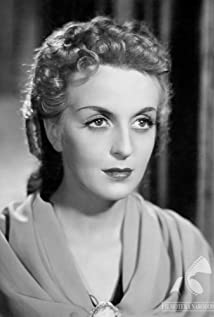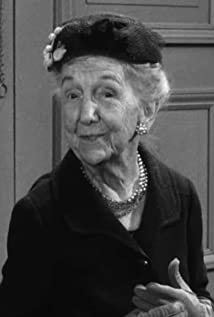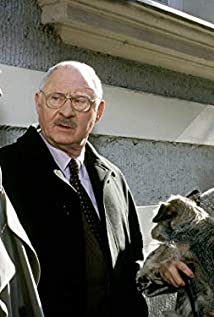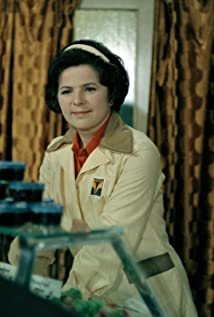Mae Clarke was born on August 16, 1910 in Philadelphia, Pennsylvania, United States, is Actress, Soundtrack. Vivacious, blonde Mae Clarke was exposed to cinema from an early age, her father being an organist in a motion picture theatre. Growing up in Atlantic City, New Jersey, she learned how to dance and, at the tender age of 13, was already performing in nightclubs and amateur theatricals. In 1924 she was one of "May Dawson's Dancing Girls", a New York cabaret act, where she was "discovered" by producer Earl Lindsay and promptly cast in a minor part at the Strand Theatre on Times Square. She then performed as a dancer and burlesque artist at the Strand Roof nightclub, situated above the theatre (which was managed by Lindsay), and at the Everglades Club, earning $40 a week. While there she struck up a lifelong friendship with fellow actress Ruby Stevens, who would later change her name to Barbara Stanwyck.In 1926 Mae got her first chance in "legitimate" theater, appearing in the drama "The Noose" with Stanwyck and Ed Wynn. This was followed by the musical comedy "Manhattan Mary" (1927). After further vaudeville experience Mae was screen-tested by Fox and landed her first movie role in 1929. While she was top-billed in films like Nix on Dames (1929), she was clearly headed for B-movie status and left Fox just over a year later. This resulted in better roles for her, though she was generally cast in "hard-luck" roles. She played prostitute Molly Malloy in the hugely successful Lewis Milestone-directed The Front Page (1931)) and, on the strength of this performance, was signed by Carl Laemmle Jr. at Universal and cast to star in Waterloo Bridge (1931) (as a ballerina-turned-streetwalker, a part made famous by Vivien Leigh in the MGM remake, Waterloo Bridge (1940)). Reviewer Mordaunt Hall described Mae's complex performance as "capital" (New York Times, September 5, 1931).Also in 1931 she had the brief but memorable role for which she will always be known: the hapless girlfriend on the receiving end of a grapefruit pushed into her face by James Cagney in The Public Enemy (1931). She later appeared with Cagney (a close friend in real life) in still more adversarial scenes, in Lady Killer (1933) and Great Guy (1936). Mae also had some feisty comedy roles, in Three Wise Girls (1932) with Jean Harlow, and starring in Parole Girl (1933). She was third-billed in James Whale's Frankenstein (1931), as Elizabeth, the title character's bride-to-be. Her best moment in the film, one of sheer terror, comes when she is confronted by the monster (Boris Karloff) in her own bedroom.Mae's career suffered several major setbacks, beginning in 1932, from which it never fully recovered. She had a nervous breakdown in June of that year (and another in 1934), most likely caused by overwork and marital problems. This was followed by a serious car accident in March of 1933. In addition to that, her sexy screen personae became limited by the new, strict Hollywood production code. When she returned to the screen, it was to be in B-pictures. She had some rewarding parts in some films for Republic, notably The House of a Thousand Candles (1936) and the civil war romance Hearts in Bondage (1936), with Lew Ayres. Despite an image change from frizzy blonde to brunette, she had few opportunities to shine after 1938, except, perhaps, as heroine of the Republic serial King of the Rocket Men (1949). By the beginning of the 1950's, Mae was largely reduced to doing cameos and walk-ons, at best playing minor parts in westerns. She did, however, make several notable appearances on television, particularly on Letter to Loretta (1953).Mae Clarke, an undeniable star of pre-code Hollywood, fell on hard financial times towards the end of her life. After her last film appearance in Watermelon Man (1970), she retired to the Motion Picture & Television Country House and Hospital and devoted her remaining years to her favorite hobby: painting in the style of Swiss abstract artist Paul Klee. She died there of cancer in April 1992.
Mae Clarke is a member of Actress
Does Mae Clarke Dead or Alive?
As per our current Database, Mae Clarke has been died on April 29, 1992(1992-04-29) (aged 81)\nWoodland Hills, California, U.S..
🎂 Mae Clarke - Age, Bio, Faces and Birthday
When Mae Clarke die, Mae Clarke was 81 years old.
| Popular As |
Mae Clarke |
| Occupation |
Actress |
| Age |
81 years old |
| Zodiac Sign |
Virgo |
| Born |
August 16, 1910 ( Philadelphia, Pennsylvania, United States) |
| Birthday |
August 16 |
| Town/City |
Philadelphia, Pennsylvania, United States |
| Nationality |
United States |
🌙 Zodiac
Mae Clarke’s zodiac sign is Virgo. According to astrologers, Virgos are always paying attention to the smallest details and their deep sense of humanity makes them one of the most careful signs of the zodiac. Their methodical approach to life ensures that nothing is left to chance, and although they are often tender, their heart might be closed for the outer world. This is a sign often misunderstood, not because they lack the ability to express, but because they won’t accept their feelings as valid, true, or even relevant when opposed to reason. The symbolism behind the name speaks well of their nature, born with a feeling they are experiencing everything for the first time.
🌙 Chinese Zodiac Signs
Mae Clarke was born in the Year of the Dog. Those born under the Chinese Zodiac sign of the Dog are loyal, faithful, honest, distrustful, often guilty of telling white lies, temperamental, prone to mood swings, dogmatic, and sensitive. Dogs excel in business but have trouble finding mates. Compatible with Tiger or Horse.
Biography/Timeline
1930
By the mid-1930s, Clarke was no longer a leading lady. In 1933, Clarke and actor Phillips Holmes were in a single-car accident that left her with a broken jaw and facial scarring.
1931
Clarke appeared as Myra Deauville in the 1931 pre-Code version of Waterloo Bridge. In the film she portrays a young American woman who is forced by circumstance into a life of prostitution in World War I London; both the film and Clarke's performance were well received by the critics.
1950
In the 1950s and 1960s, Clarke played uncredited bit parts in several notable films, including Singin' in the Rain, The Great Caruso, and Thoroughly Modern Millie. Her last screen appearance was in the 1970 film Watermelon Man.
1970
On television, Clarke appeared in many episodic series, including General Hospital, Perry Mason and Batman. Clarke retired in 1970 and taught drama.
1992
Clarke died from cancer on April 29, 1992, at age 81, in Woodland Hills, California. She is buried in Valhalla Memorial Park Cemetery.
Mae Clarke trend















